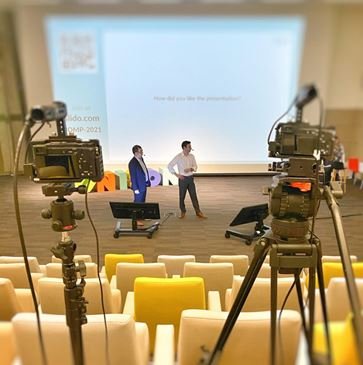The role of multimedia in marketing has grown exponentially as businesses strive to capture attention and engage audiences in the digital age. By integrating elements like video, audio, images, and animations, multimedia creates compelling marketing campaigns that appeal to various senses. As more brands recognize the power of multimedia, its role in crafting dynamic and engaging marketing strategies has become indispensable. This post will explore how multimedia enhances marketing efforts, its benefits, and why it’s crucial for modern businesses.
Enhancing Engagement with Multimedia
The role of multimedia in marketing is crucial for enhancing customer engagement. In today’s fast-paced digital world, grabbing and holding a customer’s attention requires more than just text. High-quality videos, interactive graphics, and animations keep audiences engaged longer and increase the likelihood of them remembering the brand message. For instance, brands using video marketing tend to achieve higher engagement rates as videos convey more information in a shorter time while entertaining the audience.
Furthermore, social media platforms like Instagram, TikTok, and YouTube are built around multimedia. A well-crafted video or an eye-catching graphic post can go viral, spreading the brand message far and wide. By leveraging multimedia, marketers not only engage but also entertain and inform their audiences.
Storytelling Through Video and Animation
Another key aspect of the role of multimedia in marketing is its ability to tell stories through video and animation. Storytelling is at the heart of successful marketing campaigns. Whether it’s a short animation explaining a product’s features or a full-length advertisement, video enables marketers to build emotional connections with their audience.
For example, many brands create promotional videos that highlight the journey of their product, the people behind it, or the impact it has on customers’ lives. This creates a narrative that resonates emotionally with the audience, making them more likely to connect with the brand. In addition, animations and motion graphics can break down complex ideas into simple, digestible content that’s easier for viewers to understand and appreciate.
Boosting Conversion Rates
The role of multimedia in marketing is also instrumental in boosting conversion rates. Multimedia elements like product videos, customer testimonials, and infographics help convert potential leads into actual customers by providing a richer, more interactive experience. When customers see products in action or hear real-life success stories, they feel more confident in making a purchase.
According to studies, landing pages with videos have significantly higher conversion rates than those without. Product demonstrations, explainer videos, and testimonials help eliminate doubts and provide visual proof of the product’s value. By incorporating multimedia into marketing strategies, businesses can guide customers through the purchasing journey more effectively.
Building Brand Awareness and Loyalty
The role of multimedia in marketing also plays a crucial role in building brand awareness and fostering loyalty. With multimedia content, brands can create a distinct and recognizable identity. For instance, using consistent colors, logo animations, and background music helps customers immediately recognize a brand, even before seeing its name.
In addition, multimedia marketing campaigns that evoke emotions, such as joy or inspiration, create stronger connections with the audience. When consumers experience positive emotions linked to a brand’s multimedia content, they are more likely to remain loyal to the brand. Multimedia, therefore, helps brands differentiate themselves from competitors while creating memorable experiences that foster customer loyalty.
Expanding Reach Across Platforms
Multimedia also excels at expanding a brand’s reach across multiple platforms. The role of multimedia in marketing is essential for reaching broader audiences, as multimedia content performs well on a variety of platforms including social media, websites, and email campaigns. Videos, for example, can be shared on platforms like YouTube or embedded in email newsletters, maximizing the brand’s exposure.
Additionally, multimedia content is versatile, allowing marketers to repurpose it for different platforms. A video ad created for YouTube can be edited into shorter clips for Instagram or TikTok, ensuring that the same message reaches audiences across multiple channels. The adaptability of multimedia makes it a powerful tool in ensuring a consistent and effective marketing presence.
Conclusion
In conclusion, multimedia marketing strategy is fundamental to creating engaging, memorable, and successful campaigns. By enhancing engagement, enabling storytelling, boosting conversion rates, and building brand awareness, multimedia transforms how businesses reach and connect with their audiences. Its versatility and adaptability across platforms further extend a brand’s reach, making multimedia a must-have in any modern marketing strategy. As digital content continues to evolve, multimedia will remain at the forefront of innovative marketing techniques.










